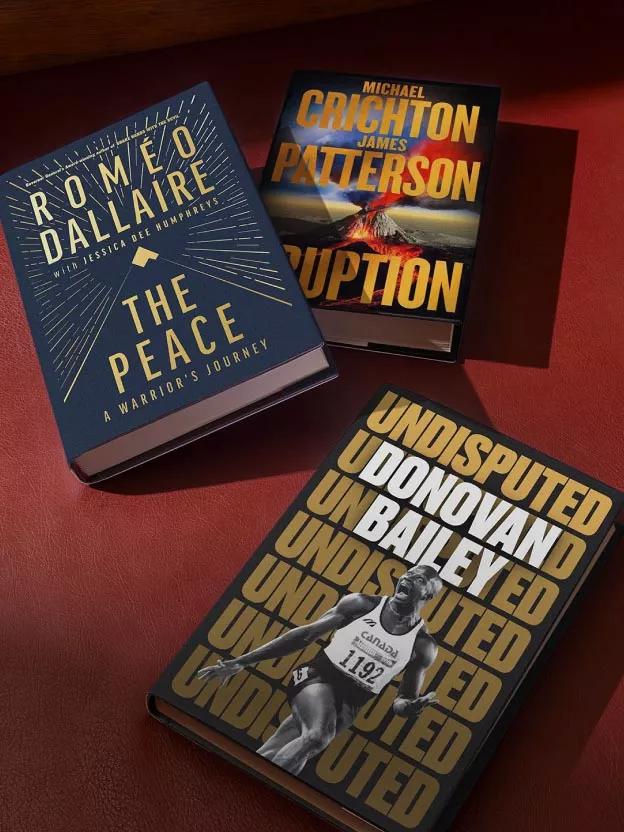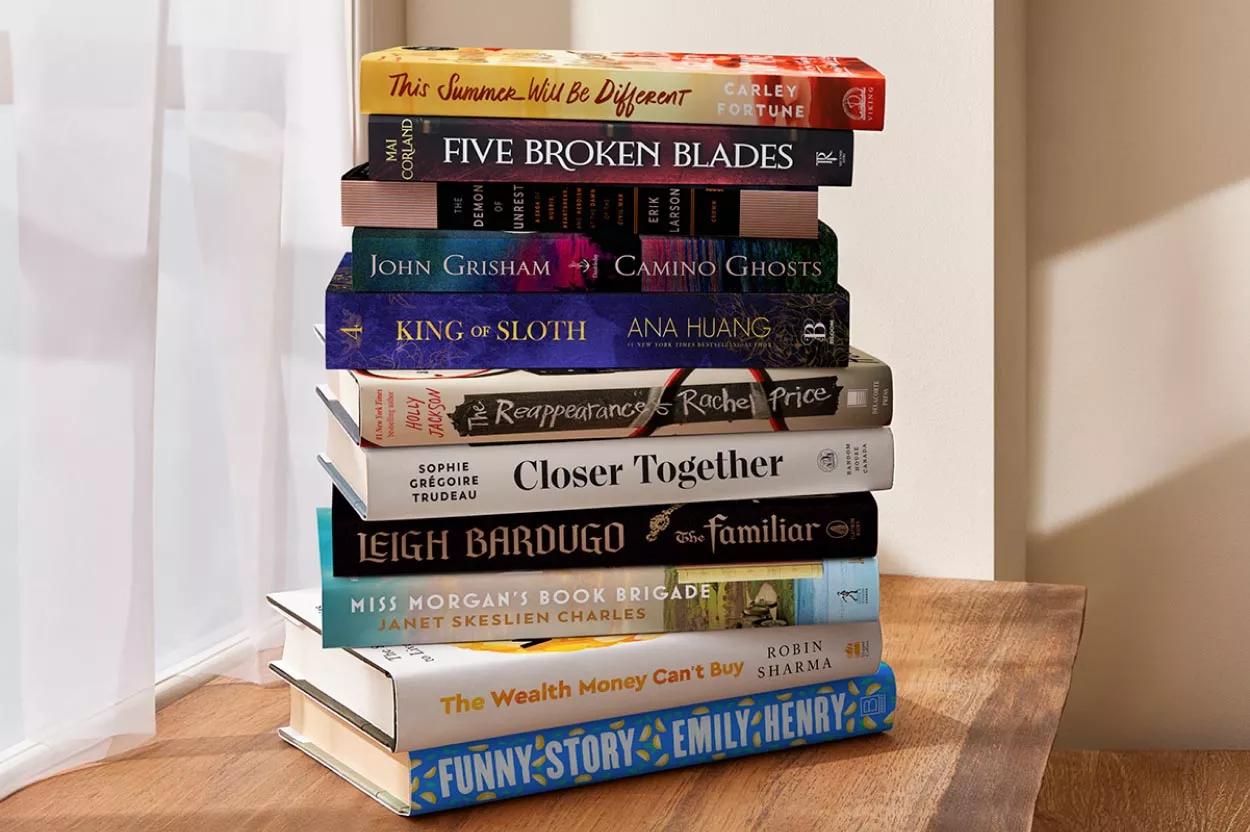Find a store
Set your store to easily check hours, get directions, and see what’s in stock.
We're sorry, we couldn't find results for your search.
Books
Your Next Great Read

Books Dad Will Love

What to Read This Spring
New & Hot
shop all-
Carley Fortune Paperback$17.463 formats available
Price reduced from $24.95 toUp to 30% off Indigo Bestsellers -
Ann M. Martin Paperback$15.003 formats available
Price reduced from $16.99 toUp to 30% off Indigo Bestsellers -
Mai Corland Hardcover$32.993 formats available
Price reduced from $43.99 toUp to 30% off Indigo Bestsellers -
-
Colm Toibin Hardcover$25.202 formats available
Price reduced from $36.00 toUp to 30% off Indigo Bestsellers -
-
Terri Libenson Paperback$15.002 formats available
Price reduced from $19.99 toUp to 30% off Indigo Bestsellers -
SARAH A. PARKER Paperback$20.002 formats available
Price reduced from $25.99 toUp to 30% off Indigo Bestsellers -
Tom Selleck Hardcover$27.742 formats available
Price reduced from $36.99 toUp to 30% off Indigo Bestsellers -
Katherine Applegate Hardcover$20.002 formats available
Price reduced from $24.99 toUp to 30% off Indigo Bestsellers -
-
-
-
Francine Pascal Paperback$15.004 formats available
Price reduced from $18.99 toUp to 30% off Indigo Bestsellers -
Laura R. Samotin Paperback$20.002 formats available
Price reduced from $26.00 toUp to 30% off Indigo Bestsellers

Pan-Asian Voices to Read Now

25% off author of the month Genevieve Graham

New From Ruth Ware
Bestselling Books to Read in 2024
Need a new book to read? Start with a bestseller for a nearly guaranteed hit that’s sure to keep you turning those pages. Whether you love thrillers, historical fiction, sci-fi, memoirs, or any genre in between, browse through our list of bestsellers and book some time with your next great read.
For a heart-racing reading experience, pick up a thriller bestseller by some of our favourite authors.
This unputdownable mystery follows a woman searching for answers a decade after her friend's murder.
Wrong Place Wrong Time by Gillian McAllister
A twisty psychological thriller about a mother who gets a chance to save her son after she witnesses him murder a man.
Love the King of Horror? Then don’t miss this bestselling thriller about a teenager who unlocks a parallel world.
Reese Witherspoon Book Club Picks
The bestselling books in Reese Witherspoon’s Book Club are by women authors and are always riveting reads.
Our Missing Hearts by Celeste Ng
The author of Little Fires Everywhere tells a riveting story about a deep mother-child bond amid a world filled with fear.
The Last Thing He Told Me by Laura Dave
Speed through this thriller about a woman whose husband disappears, leaving her with a cryptic note to protect his stepdaughter.
These bestselling books serve up love and laughter with plenty of heart.
Alex and Ava's love was one that was never supposed to happen... but when it does, it unleashes secrets that could destroy them both.
It Starts With Us by Colleen Hoover
The long awaited sequel to It Ends With Us tells Atlas's side of the story and follows Lily as she takes a second chance at love.
For incredible true stories of resilience, don’t miss these bestselling books.
I'm Glad My Mom Died by Jennette McCurdy
A heartbreaking and hilarious memoir by iCarly star about her struggles as a former child actor.
The Light We Carry by Michelle Obama
An inspiring follow-up to her #1 bestselling memoir Becoming.
Bestsellers based on moments in history that transport us back in time.
She Who Became the Sun by Shelley Parker-Chan
This literary fantasy reimagines the rise of the Ming Dynasty in 14th century China.
The Secret Keeper of Jaipur by Alka Joshi
In the follow-up to the bestseller The Henna Artist, follow the Lakshmi’s former assistant in his new role at the royal palace.
Escape to new worlds in these magical bestsellers.
From Blood & Ash by Jennifer L. Armentrout
Start with book one in this bestselling fantasy trilogy described as sexy and unexpected.
God & Monsters by Shelby Mahurin
If you love the bestselling books in the Serpent & Dove trilogy, don’t miss the stunning conclusion.
From space exploration to A.I., these bestselling books explore all sorts of thrilling futuristic premises.
Project Hail Mary by Andy Weir
The newest bestseller from The Martian author is another intergalactic adventure that’ll keep you on the edge of your seat.
Klara and the Sun by Kazuo Ishiguro
From a Nobel Laureate author comes a stunning novel exploring what it means to love.
For delicious meals and baked treats, give these recipe tomes a whirl.
Ottolenghi Test Kitchen by Yotam Ottolenghi
The second installment in the Ottolenghi Test Kitchen series that delivers maximum-flavor recipes.
More Mandy's by Mandy Wolfe, Rebecca Wolfe and Meredith Erickson
Learn how to make the delicious salads from this beloved Canadian restaurant.




















